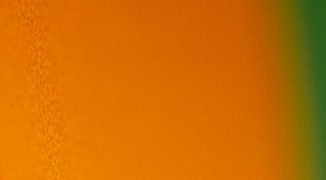There was a time when flair was king. The flashing lights, the whistles, the ceremonial emblazoning of a hundred dollar bill on the forehead, they were all part of the show. Bottles and tins filled with a kaleidoscope of brightly colored booze flew through the air in an all-out “shock and awe” aerial spectacle. Fire-breathing bartenders pouring ten drinks at a time elicited cash, fame and sheer delight from the crowd. The “golden era” of flair bartending was truly a sight to behold. It marked the culmination of years of economic boom in America, and it thrived in a bar scene with rampant strobe lights, pounding club music and an intense party atmosphere led by rockstar bartenders.
The seeds of flair had been sown since the time of Jerry Thomas in the 1800s, and slowly evolved through the mid-1980s, when the modern form blossomed (and was first championed by restaurant chain TGI Friday’s). What began as exaggerated bar antics soon grew into an all out Bar Olympics that involved juggling, showmanship and drink slinging-expertise. One of the first winners of these competitions, John Bandy, famously trained Tom Cruise for the movie that was the ultimate catalyst for flair, “Cocktail.” From there, there was no turning back.
Flair spread from New York through the rest of the country and then around the world. But nowhere did the golden era of flair shine brighter or last longer than in Las Vegas, where some of the best flair bartenders could make six figures on competitions alone—and behind the bar, enough to drive Lamborghinis. The stars of flair were flown across the world to spread their brand of high-flying, cup-flipping good times.
“I think we were really starting to grow in popularity in the late ’90s. Ken Hall, Christian Delpech and Tobin Ellis were all instrumental in pushing it forward,” says long time Vegas flair bartender Vahe Manoukian. “In Las Vegas they had a lot of themed restaurants and ultra-lounges that were popping up all over the strip; at one point the entire Rio Casino went 100 percent flair! All of these venues attracted a slew of new flair bartenders to Las Vegas from the U.S. and abroad. We gained momentum but also a lot of media attention.”
But it didn’t last. The winds shifted, alongside a stall in cultural momentum. Flair became less lucrative and desirable in New York City, where it was conceived and popularized. There, the flair scene atrophied and all but disappeared. Stoic neo-speakeasies became the norm, indicative of the city’s injured spirit in the wake of 9/11. In many ways, the high-flying party days had come to a close.
Terrorist attacks, a war in Afghanistan and later, a recession could be blamed for a more subdued energy in our nation’s bars, but even more than that, it seemed that the very essence of our beverage world began to change. There was a trend to drink quality over quantity. Places like Milk & Honey, PDT and Employees Only led this change, catering to patrons who wanted their drinks to be more than just a flip of the wrist and a syrupy sweet afterthought.
Legendary mixologist Francesco LaFranconi describes this marked change in the palates of Americans: “I feel that the American palate has tremendously improved since 2000. The first year that I was here we were trying to make classic Italian cocktails, and 90% of my customers refused to put them on the menu because their customers would not buy them.” Of the iconic bitter Negroni, he says, “Now for a place to be called a legitimate cocktail bar, it is a necessity to have this on the menu. This in thanks to the great efforts of American bartenders and chefs, who are promoting these new flavors.”
“Mixologist,” a term used as early as the 19th century, resurfaced to distinguish a barman whose focus was on the drink itself. In some ways, the mixologist was the antithesis of the flair bartender. Rather than putting on a show, they prioritized proper execution of classic cocktails, along with in-depth knowledge of spirits, pertinent beer styles and flavor profiles. As consumers became more savvy about products and tastes became elevated, our bar culture deviated from the “consume mass quantities” model. Flipping bottles and free-pouring was out; jiggering and bottle presentation was in. For some, throwing the bottle almost seemed disrespectful to the glorious liquid held inside.
Some practitioners of flair say that the bottles never fell. They point out that in Vegas and internationally, flair continued with a successful presence. Anthony Pullen, a former champion flair bartender and the education manager for Lucas Bols, agrees: “I honestly believe that flair has not reached its ‘peak’ and never will. Obviously there was a golden period in the ’90s and early 2000s when there were countless competitions and insane levels of prize money,” he says. “In my experience, flair, when done well, in the service world is a direct reflection of popular culture of the time. It is at its absolute best when it’s fresh, unexpected and relevant to the situation. For this reason it is always evolving and changing. Measuring flair styles from today and yesterday just doesn’t work.”
Many imbibers have lost their connection with flair as the divide between mixologists and flair-tenders deepened. But Pullen doesn’t think it should be that way. “As a bartender you should take your technique seriously. Personally I define flair as a mastery of your technique. Knowledge of drinks does not define a bartender. However, ability to execute said drinks does. In Europe, there is not such a distinction among flair and mixology. You are kind of expected to do both.”
Visual stereotypes associated with the two have only further intensified the distinction: spikey-haired, amped-up party boys face off against mustachioed, bowler-wearing hipsters. But apart from superficial differences, the Flair Bartender and the Mixologist share an abundance of passion for their craft. You can pick your poison based on your desired experience, but both bartending styles deserve respect. And in the same vein, both styles are in vain if the bartender loses sight of what’s important: the guest.
After all, Flair and Mixology both derive from the 19th century, and both pay homage to the same key figure: Jerry Thomas. He, the Blue Blazer and the lost art of the roll are all part of the original drunken history, bridging the gap between the zenith of the cocktail and of flair. “They share the same history, you can’t have one without the other,” says Pullen. “I believe that if Jerry Thomas had not been a show-off, nobody would have noticed him and he wouldn’t have had the platform to write all of those recipes. They could have been lost. Drink geeks should be thankful that The Professor was a flair bartender.”
Now that we’ve reached a new level of maturity in our beverage renaissance, there are signs that we may be coming full circle. “Flair is and has been adapting to more of the craft style of bartending while still keeping flair a big part of it,” Pullen says. There’s a newfound buzz around the vivacious bartending style. The energy isn’t just coming from Vegas or abroad either, it’s coming from where it all began: New York City.
An icon in the refined cocktail movement, Employees Only has had a dose of “working flair” in their bar program for some time. Principal bartender Steve Schneider is now expanding his flair regimen and taking it on the road. “We’ve seen the gap in the styles come closer and closer,” says Pullen. “We even had Steve do a guest spot at Fuel Bar where he flaired every drink he made and had a blast doing so. The turnout was amazing from both sides and it was just good old-fashioned fun. The more bartenders embrace all aspects of bartending, the faster it grows and the better it will be.”
Bartending is a great American living art and has always been fundamentally linked to the heart of our culture. Barmen are the maestros of our good times, and it is their job to conduct the beautiful booze symphony that is the bar. Flair bartenders have found a way to take the show a step further. It’s more than a ritualistic hustle; it’s the evolution of bar shenanigans on steroids. When done well, flair creates a visceral, dynamic and exciting experience. The good flair-tender is able to work the room like a DJ, raising the volume & tempo to bring the crowd into a frenzy at will. At the very least, it’s a vital component of our drinking history and there are many signs that it’s coming back. In what form? Only time will tell. Either way, we’ll see you at the bar.
Photo of Atilla Iskifoglu by Cocktailmasters via Wikimedia Commons.





